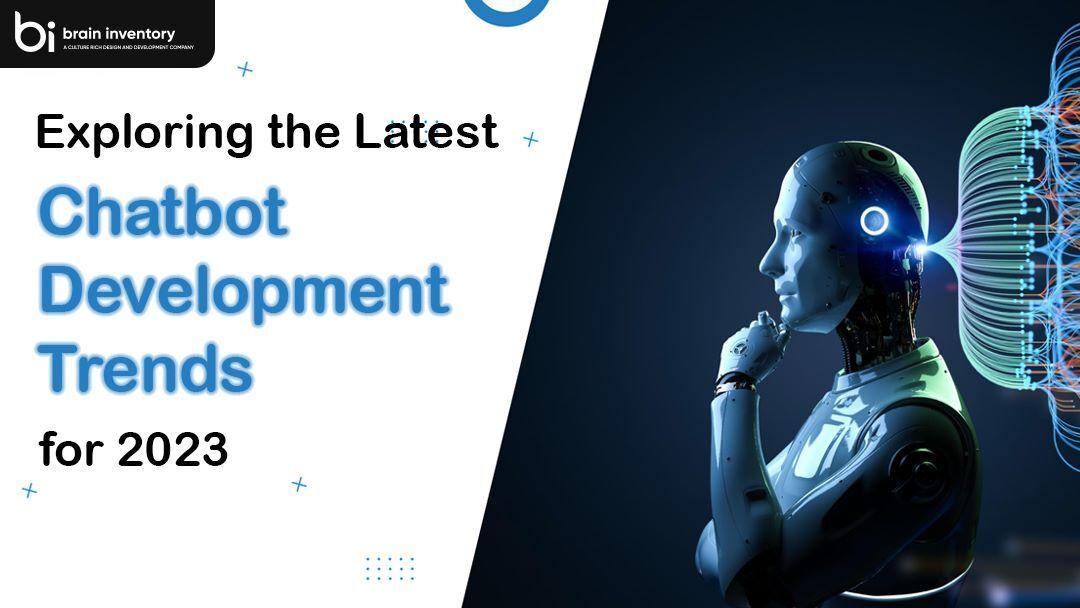Exploring the Latest Chatbot Development Trends for 2023

Quick Summary: One of the most popular topics in technology today is chatbots. Because people are willing to communicate via instant messaging instead of reading, chatbots have opened up a whole new channel for businesses to communicate with their customers in real-time. By 2020, Gartner predicts that 85% of customer interactions will be handled without a human agent. But what are the latest trends in chatbot design? What are the emerging technologies being used to develop better chatbots? And how can you use chatbots to improve your own business? All these questions and more will be answered in our ultimate guide to the latest trends in chatbot development.
What Is A Chatbot?
Chatbots have exploded in popularity in recent years. They are widely used in customer support, marketing, and sales; however, chatbots are starting to make their way into other industries. Many businesses big and small have been investing heavily in chatbots because they offer a range of benefits: They automate tedious tasks, create new revenue channels, and free up staff to focus on other areas of the business. Chatbots can save you time and money but there’s a lot that goes into creating an effective chatbot for optimal results.
A chatbot is an Artificial Intelligence (AI)–powered application that interacts with customers and provides them with information. Chatbots can be used in messaging applications such as Facebook Messenger, Slack, Kik, etc. Businesses are now using chatbots to assist in customer service, reduce the number of operating costs, and grow their business.
Chatbot Development Trends In 2023
Natural Language Processing (NLP) and Conversational AI:
It is quite challenging to build a chatbot that can understand and respond to the diverse types of inputs that a user can provide. Natural Language Processing (NLP) is the most crucial component of any chatbot, yet most companies fail to talk about this part when they’re promoting their offerings. Natural language processing (NLP) is a branch of artificial intelligence concerned with the interactions between computers and human (natural) languages. It has been ongoing for many years now by scholars, computer engineers, and other specialists across the globe, resulting in significant advancements in the field. These advancements also contributed to the creation of chatting robots which are some of the most important components of natural language processing.
Multilingual Chatbots:
While software programs have long been able to communicate in multiple languages, the innovation of multilingual chatbots has revolutionized the way businesses interact with customers. These chatbots are designed to assist a business in any location or language, greatly increasing customer support while overcoming technological and human obstacles. Multilingual chatbots can boost any company’s customer care efforts by offering 24-hour support, answering frequently asked questions, or simply interacting in multiple languages.
Voice-Enabled Chatbots:
Voice-activated chatbots are a part of the booming voice-enabled technology. In the increasingly demanding and connected world, where buyers are looking for more engagement before making a purchase, voice interaction is proving to be an effective way to interact with customers. Popular virtual assistants such as Siri, Google Assistant, and Alexa are giving people a chance to do more things hands-free.
Chatbots for Healthcare:
In the healthcare industry, chatbots are used by patients to help them through their symptoms and answer some of their questions. They can schedule an appointment, track how they’re feeling, and even provide medical advice if it’s needed. They are available 24/7 and can answer many common questions that don’t need to go through a third party.
Personalization:
With the increasing use of conversational interfaces and chatbots in customer service roles, creating truly personalized experiences has become much more important. Chatbots can gather information about users from previous conversations and use that data to facilitate user-to-user communication. There are numerous techniques for incorporating data during chatbot interactions, and some have a higher return on investment than others.
Integration with other Technologies:
Chatbots are increasingly being combined with cutting-edge technologies like Augmented Reality (AR), Virtual Reality (VR), and the Internet of Things (IoT). This integration enhances user experiences by offering a more immersive interaction.
Chatbots for E-commerce:
Chatbots are one of the latest internet technologies that have been swept up in the recent trends of conversational commerce and artificial intelligence. As technology continues to evolve, chatbots provide an opportunity for e-commerce websites to stay relevant by implementing a technology that is native to the experience of the internet, by allowing users to talk to businesses directly via messaging platforms like Facebook Messenger or Kik.
Improved Security and Data Privacy:
Chatbots are becoming more and more common in enterprises. Chatbot technology aims to increase customer satisfaction, promote better customer service, and boost sales. While chatbots hold a lot of potential, there are some challenges that need to be addressed urgently. In order to achieve that, developers are starting to focus on the security and privacy of chatbots along with the implementation of end-to-end encryption and access control solutions.
Chatbots for Education:
Students, teachers, and parents are all going to find the implementation of chatbots in the educational industry to be beneficial. Chatbots can provide help with everything from testing to homework assignments. Students will have easier access to teachers and school support staff, which reduces the need for students to reach out via phone or email, which helps reduce demands on teachers’ time.
Conclusion
As a rapidly evolving technology, chatbots are transforming the way businesses interact with their customers. The potential is undeniable – with advancements in natural language processing, multilingual support, voice-enabled interactions, and personalization, chatbots are becoming more sophisticated and capable of handling complex tasks. Consider enlisting the services of a chatbot development company such as Brain Inventory, experts in crafting tailored chatbot solutions to meet your specific business requirements.

Have an idea?
Get in touch, we’d be
happy to hear from you
We are always looking out for new collaborations, whether you are a client who is passionate about a project or a talent who is interested in joining our team, our doors are always open.
locate us

India (HQ)
618, Shekhar Central, Palasia Square, A.B Road, Indore, Madhya Pradesh, 452001
+918109561401

United Kingdom
Brain Inventory, SBVS, 8 Roundhay Road, Leeds, UK, LS7 1AB
+18008209286

Canada
44 Main Street East Milton, ONCanada L9T 1N3
+4166696505

Jordan
185 Wasfi Al-Tal Street, Ammon Oasis Complex P.O Box 4724 Amman 11953 Jordan
+960770781000

USA
720 Seneca St Ste 107 Seattle, USA 98101
+1(206)6533419
if it's digital,we'll make it.
- Numetric - Online Accounting Software similar to QuickBooks
- Bloomia - Kegel exercise
- Virifi - Blockchain Powered Document Certification & Signing Platform
- Revolution Travel CRM - Custom CRM Built for Travel Agents
- Fatoura - Online Invoicing Platform
- My Fit Mantra - Your health partner
- Ocureel - Relation Building and video sharing Application